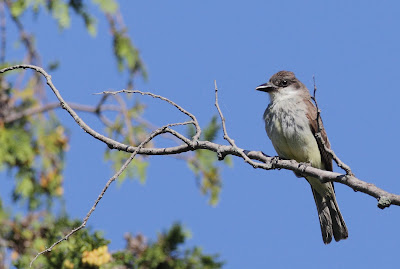Disclaimer! Princeton Publishing provided a copy for review!
What do I have to say about this book? Answer: Boom goes the Dynamite
Book review: Petrels, Albatrosses & Storm-Petrels of North America
The Skinny:
Price Listed on the Book: $45
Author: Steve Howell
Pages: 520
Size: 7x10
975 photographs!!!
What is it? It's one of those sweet (oh so sweet) reference books where you can take off the goofy cover jacket and the cover itself is just hard fabric... Some of my absolute favourite bird books are reference books like this, and I could tell I was going to like it right off the bat
So you pretty much know what it's about (seabirds of North America - every species)... and if you don't want to read any further: my overall opinion is that this book is awesome. If you're going to look at seabirds in North America (as vagrants, post hurricanes, from a fishing boat, or organized pelagic --- on either ocean) --- this is the book you buy and excitedly study as you wait 3-4 months for the trip to actually happen. It has superb photos and all the info you need. Get it!
The book is set up like many other reference works... A cover photo at the start, important text (description, similar species etc etc), range map etc... followed by a spectacular array of photos... There are general clumps of species put together depending on what ocean you're observing (eg,/ the pacific petrels and Atlantic petrels are generally grouped together) - which makes reading/studying easier...
I was extremely impressed with the (implied) importance --- when dealing with "vagrants "to north america - to use ACTUAL photos of these vagrants that were seen in North American waters... A big peeve of mine with photographic bird books is when they show a vagrant** that isn't a good representative of how they would be seen here... And not only that, but it is a lot of fun to look at "rarity photos" to begin with.. And see almost exactly what the observers saw in real life!
The author also does a fantastic job in dealing with future splits... I won't dive into too much detail here, but seabird taxonomy always seems to be changing -- and jumping the gun a bit --- to keep the book relavant in the future, was done extremely well...
So what didn't I like???
Well with pretty much every "North American" bird book, it just feels like it's written about the USA only... Maybe I'm just jaded by now, but it feels that way to me...
I was very excited to study the range maps for Atlantic seabirds, given my interest in Netitishi Point on James Bay... Just how far north did they map Great Shearwater? How about Manx? The closer they travel, the better odds we have at Netitishi, right?
Well the "atlantic" maps just barely reach St. Johns, and don't show anything higher... Now sure, I'm probably one of a handful of people who actually care (and I know real information is limited anyways) -- but it was a bit of a let-down to see that nothing was illustrated..
And while I was happy to see that "Northern Fulmar" has been recorded from James Bay in the text, there was a seemingly modest discussion of the "atlantic" fulmar in general, with less photos that I would have liked.. But I guess that's the way it goes!
For ~$45 the book is absolutely a steal. 975 photos!!!
Who should buy it: anyone who wants to learn about seabirds... Heck, maybe if more people had this book, our Yellow-nosed Albatross in Kingston would have been seen by more observers (ha)... But seriously, its a great book to have around home... Great to study before going on a planned pelagic, a required book if we ever get another Hurricane ---- and hey, you'll kick yourself if you ever find a seabird as a vagrant, and you can't use it as a reference...
Who shouldn't: buy it: umm, birders who can't afford to spend $45? Birders are known to generate superb book collections, and this one is a gem... Heck, Ontario has enough water to justify it... Maybe if you life in North Dakota, and never plan on seeing salt water - you could skip it... But even still, its fun to just look at the photos....
Remember this Manx from Van Wagners in 2006?
=================================
** something like a Red-necked Stint in "breeding plumage" --- when its actually a bird photographed somewhere in asia in April (and only 30-40% in breeding plumage).... Since these birds look NOTHING like the worn adult vagrants seen in N.A. in JULY (and are useless)...













.gif)











